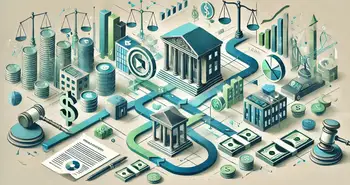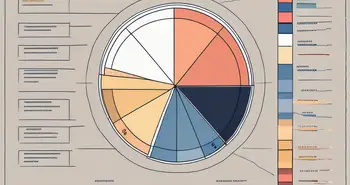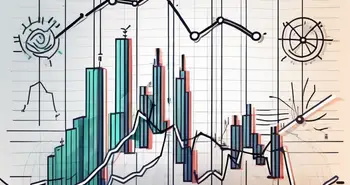Quantitative Easing: How Central Banks Influence the Economy

Quantitative easing is a monetary policy that has gained significant attention in recent years, especially during times of economic distress. As someone who has closely studied the intricacies of economic policies, I’d like to guide you through the fundamentals of quantitative easing, its history, mechanics, impact, and its pros and cons.
What is Quantitative Easing?
The Basic Concept of Quantitative Easing
Quantitative easing (QE) is a form of unconventional monetary policy used by central banks to stimulate the economy when traditional monetary policy becomes ineffective. Essentially, it involves the large-scale purchase of financial assets—typically government bonds—in order to inject liquidity into the financial system.
Imagine a dry sponge that needs water. By purchasing these assets, central banks inject ‘water' into the economy, which can reduce interest rates, encourage lending, and stimulate economic activity. This approach aims to combat deflation and support price stability.
The Role of Central Banks in Quantitative Easing
The central bank plays a pivotal role in implementing QE. In the United States, the Federal Reserve is responsible for this crucial task. When engaging in quantitative easing, the Federal Reserve manipulates the money supply to promote greater borrowing and spending by consumers and businesses.
Central banks monitor various economic indicators, and if they notice that inflation is lagging or unemployment remains high, they may choose to deploy QE as a tool to help improve these conditions. As an avid follower of economic trends, I have witnessed first-hand the debates surrounding the effectiveness of central banks' decisions on such interventions.
The History of Quantitative Easing
Quantitative Easing in the 20th Century
While QE’s modern application primarily took root during the 2008 financial crisis, its origins can be traced back to Japan in the early 2000s. The Bank of Japan initiated QE measures to address a stagnant economy suffering from deflation and slow growth.
This case demonstrated that traditional tools, such as lowering interest rates, were insufficient, prompting central banks worldwide to adopt similar measures in the face of economic uncertainty. Witnessing Japan's trials with QE has greatly influenced how I view subsequent policies adopted globally.
Modern Applications of Quantitative Easing
Following the 2008 financial crisis, quantitative easing took center stage in the United States and Europe. The Federal Reserve launched multiple rounds of QE to stabilize markets and spur economic recovery. In addition, the European Central Bank employed QE strategies to tackle the Eurozone's economic challenges, including high unemployment and sluggish growth.
As I observed these shifts, it was evident that QE was no longer simply a last-resort strategy; it had become a mainstream policy tool used around the world. This shift raised pertinent questions about its long-term implications for economies globally.
The Mechanics of Quantitative Easing
The Process of Implementing Quantitative Easing
To kick off QE, a central bank sets a target for the amount of assets it plans to purchase. This purchase occurs on a regular schedule, often monthly, with the goal of increasing liquidity in the financial system.
Once the central bank buys assets, the process sends a wave of new money into the financial system, which, in turn, lowers interest rates and encourages lending. Observing this process in action has provided me with valuable insights regarding how monetary policy can drastically impact economies.
The Tools Used in Quantitative Easing
The primary tools used in QE include the purchase of government bonds and mortgage-backed securities. These tools aim to lower yields, making borrowing cheaper for consumers and businesses.
Understanding the diverse factors and instruments involved in QE has deepened my appreciation for the complexities of macroeconomic management. Each tool has distinct roles in shaping economic outcomes, demonstrating that a central bank's choices can have far-reaching impacts.
The Impact of Quantitative Easing on the Economy
Effects on Inflation and Interest Rates
One of the most significant effects of quantitative easing is on inflation rates. By increasing the money supply, QE can lead to an uptick in inflation, as too much money chases too few goods.
Lower interest rates, as a result of QE, also result in cheaper loans for consumers and businesses, which can drive spending and stimulate growth. However, this relationship is complex. I've seen both sides of this story, where some economists argue that the prolonged low-interest environment can foster risky behaviors in the financial markets.
Influence on Financial Markets
The influence of quantitative easing on financial markets is undeniable. By purchasing assets, central banks push up their prices and lower yields, prompting investors to seek higher returns in riskier assets.
This push can inflated asset prices, creating bubbles in various sectors. My experiences in financial analysis have shown me how important it is to monitor these price impacts closely. It's a balancing act between stimulating growth and avoiding excessive risk-taking.
The Pros and Cons of Quantitative Easing
The Benefits of Quantitative Easing
Quantitative easing has several potential benefits, including:
- Stimulating economic growth during downturns.
- Lowering borrowing costs for consumers and businesses.
- Supporting financial markets, protecting jobs, and reducing unemployment.
In my observation, when executed carefully, QE can play a crucial role in steering an economy back to stable growth, particularly after a recession.
The Drawbacks and Risks of Quantitative Easing
Despite its potential benefits, quantitative easing comes with significant drawbacks and risks, such as:
- Creating asset bubbles due to excessive liquidity.
- Increasing inequality, as asset prices rise disproportionately.
- Risk of higher inflation if policy is not unwound carefully.
This understanding is critical; I’ve often witnessed decision-makers grappling with how to exit QE without destabilizing the economic recovery that it aims to achieve.
Frequently Asked Questions (FAQ)
1. What is quantitative easing?
Quantitative easing is a monetary policy that involves the large-scale purchase of assets by central banks to increase the money supply and stimulate economic activity.
2. How does quantitative easing work?
By purchasing financial assets, central banks inject liquidity into the economy, lowering interest rates and encouraging lending and investment.
3. What are the risks associated with quantitative easing?
The implementation of QE can lead to asset bubbles, increased inequality, and risks of higher inflation if not managed correctly.
In conclusion, understanding quantitative easing requires appreciating not only its mechanisms but also its wider implications for the economy. Through this lens, we can better navigate the complexities of monetary policy and its effects on our financial future.
As you navigate the complexities of quantitative easing and its impact on the financial markets, consider how you can take advantage of the economic landscape with Morpher. Our revolutionary trading platform leverages blockchain technology to offer zero fees, infinite liquidity, and the ability to trade across a multitude of asset classes. Whether you're interested in stocks, cryptocurrencies, forex, or even niche markets like NFTs, Morpher provides a unique and flexible trading experience. Sign up today to enjoy the benefits of fractional investing, short selling without interest fees, and up to 10x leverage to maximize your trading potential. Plus, with the Morpher Wallet, you maintain full control over your funds. Sign Up and Get Your Free Sign Up Bonus now to transform the way you invest and capitalize on market opportunities in any economic condition.

Disclaimer: All investments involve risk, and the past performance of a security, industry, sector, market, financial product, trading strategy, or individual’s trading does not guarantee future results or returns. Investors are fully responsible for any investment decisions they make. Such decisions should be based solely on an evaluation of their financial circumstances, investment objectives, risk tolerance, and liquidity needs. This post does not constitute investment advice.

Painless trading for everyone
Hundreds of markets all in one place - Apple, Bitcoin, Gold, Watches, NFTs, Sneakers and so much more.

Painless trading for everyone
Hundreds of markets all in one place - Apple, Bitcoin, Gold, Watches, NFTs, Sneakers and so much more.









